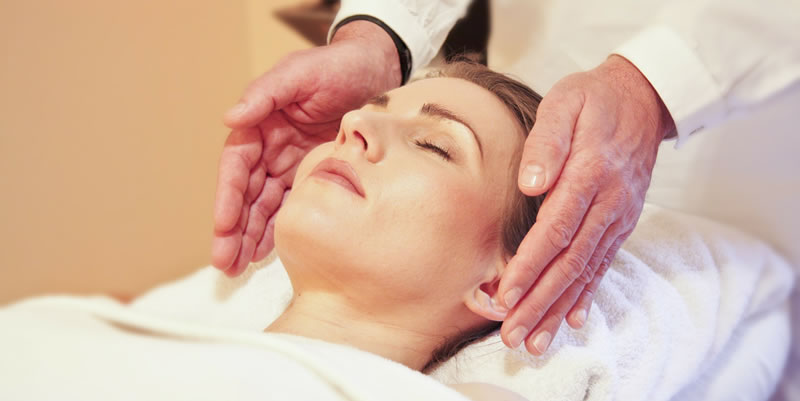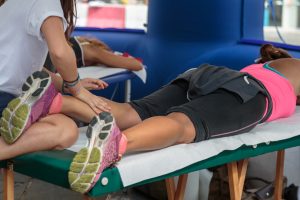Many people can benefit from some form of massage. Years ago it was only available for the wealthy and seen as a luxury treatment only but these days it is quite readily available, due to all the positive health benefits that can be gained from receiving massage.
Most gyms, clinics, hospitals and even some offices have massage facilities on offer. At many service stations on the motorways, there is often a massage chair available for a small charge to revitalise you for your onward journey.
Some massages are purely for relaxation, which can have a calming effect and help with the stresses and strains of everyday life, which obviously helps with general well-being. But massage in general can be used for a variety of other health benefits such as back pain and headaches, including migraines, sports injuries etc and it can help with sleep problems too.
It is often used in conjunction with conventional Western medicine and is frequently used to reduce the side effects of cancer treatment.
And apart from the numerous health benefits in times of pain or general malaise, it can also be seen to help improve and boost the immune system.
Massage is a general term for many techniques such as stroking, tapping, kneading etc to eliminate fatigue and improve blood circulation. A massage treatment usually consists of pressing, rubbing or manipulating skin, tendons, muscles and ligaments. The massage therapist should be fully trained, qualified and insured and will discuss with their client if they want light or deeper massage.
Massage causes physiological changes in your body and the physical manipulation increases blood circulation and relaxes the soft tissues, leading to increased serotonin levels, in turn leading to positive effects on your thoughts and emotions.
Massage therapy is mainly used to relax muscle tissues. Pain and discomfort is caused by frequent contractions and spasms of the muscles and when they contract they compress the nerves around them. Massage releases the tension in your muscles so the nerves operate more freely, enhancing your range of motion.
There are many different types of massage, some of the most popular being:
Swedish/Holistic/Body/Relaxation Massage
There are many different titles used for this generalised massage, but they all cover the same basic strokes. This commonly helps you to feel relaxed and re-energised. It can be gentle or deeper and tends to use short and longer strokes and deep circular movements, including effleurage, petrissage, kneading, vibration and tapping.
Sports Massage also known as Sports injury massage
This is quite different from the massage mentioned above and tends to be really useful for treating or preventing injuries for people who indulge in any type of sport, for example, running, cycling, walking, team or individual sports. It repairs damaged muscles and on a regular basis maintains a level of fitness to enable the sport to be enjoyable. It is often used pre and post-sports activities, particularly at competitive levels of training.
Deep Tissue Massage
This type of massage uses a slower technique and uses strokes that target deeper layers of tissue and muscle releasing tension caused by an injury of any kind to muscles. This doesn’t necessarily mean that it will be painful however, and you should always discuss and give feedback to your massage practitioner making sure that any pressures are within your comfort zone.
Trigger Point Massage
This is a massage which only focuses on one specific area, where the muscle fibres are tight following an injury or due to overuse.
Contraindications:
Sometimes massage therapy is not appropriate, and any fully trained massage therapist will go through your case history during the initial session and will make a decision if massage is appropriate and safe for you. Obviously, if you have any medical conditions that you think your massage therapist should be aware of, then discuss this with them on the phone before making your appointment. You could also discuss this with your GP before booking an appointment.
Why Massage Therapy is good for your Health
Massage can have a calming effect in times of stress, helping you to order your thoughts more easily and giving you a general sense of well-being. Check out some of the benefits of massage below:
Improved sleep – It can be of enormous benefit if you have trouble sleeping, either having difficulty getting to sleep or waking frequently or for long periods in the night. The causes of bad sleep could be chronic muscle tension and stress that gets stored over in your body over a period of time. The muscles can be eased to increase blood circulation and your sleep may be significantly improved. The benefit can last not only for the day of the treatment but for days afterwards. If you do find it effective at improving your sleep then it can be advisable to have regular treatments to promote better sleep habits. It is in sleep that the body heals itself and the mind can be sorted more easily.
Detoxifying – Massage can help release toxins from your body. These toxins can build up in the body leading to aches and stiffness. Releasing these toxins promotes much better overall health.
Increase flexibility – It can also have huge benefits in flexibility. After a period of gym work or great athletic exercise, it is common to rest but massage therapy can help with passive stretching and help overworked muscles to heal faster. You would probably see a Sports Massage therapist for this work.
Reduce stress – If you are really stressed, massage can frequently be of great benefit. When you feel calm inside, the world outside can appear calmer. Massage stimulates relaxation responses leading to a state of calmness and ability to rest. We are frequently stressed and overwhelmed by too much noise, social media interaction, negative news watching and general over-stimulation of our nervous systems. This is why massage performed in a quiet, safe, calming room is so beneficial leading to a feeling of relaxation and peace of mind.
Increase range of motion – The more massage you have and the more your muscles are freed from knots and tension, the easier you will find your range of motion and ability to accomplish everyday tasks without pain or difficulty. This helps with your posture and your general well-being. It also helps if you participate in yoga or Pilates which in a circular way helps with your flexibility.
Improve general health and well-being – Regular massage can lower your blood pressure and your cortisol levels, the latter being related to stress and anxiety.
Pain Management – The increased blood flow induced by massage to the sore muscles and stiff joints triggers the release of opioids (natural painkillers). Massage also increases the release of the hormone oxytocin which leads to a feeling of calmness and a relaxed state. It is used by mainstream medicine as a complementary therapy for those suffering from arthritis and lower back pain.
Improved Blood Circulation – Manipulation of soft tissues increases better blood circulation through the body, relieving muscle tension and constricted blood vessels. This increases the supply of oxygen and all essential nutrients throughout your body, meaning more efficient tissue function and better cellular health. A body which functions more efficiently has reduced inflammation and helps with absorbing excess fluids so vital to body health. Massage can be of enormous benefit for improving blood circulation which in turn can lead to more strength, a better body metabolism, an improved athletic performance and even clearer thoughts.
Treat Injuries and Promote Healing – Muscles which are repeatedly used can suffer from chronic pain and other injuries. It is well known that athletes in whatever sphere benefit greatly from deep tissue massage targeting tired muscles. Massage is recommended by doctors as an alternative to painkillers for muscle or sport-related injuries. This way it can be focussed on the parts of the body that are in pain or stiff holding the most tension, these are usually the back, shoulders and neck, rather than as a general pain killer.
Improve Posture – If you have poor posture, the body accepts this position as normal. But this may give you an unusual appearance and also cause some muscles to work harder than they normally should. This in turn frequently leads to increased pain and can cause pressure and damage vital internal organs by limiting blood circulation to those parts. Massage techniques help to relieve the pressure points leading to control over your position. When your body has readjusted to a natural upright posture, this becomes the norm and you will find the pain can be greatly reduced.
Boost your immune system – Massage, by reducing pain and encouraging relaxation, has enormous benefits for your immune system. After a few sessions, the number of lymphocytes in your body increases, leading to an increase in the number of white blood cells. These white blood cells play a huge role in protecting your body from disease-causing microorganisms. This in turn reduces the levels of inflammation, encourages better sleep and suppresses the production of the stress hormone cortisol, which plays a big part in aggressive behaviour.
This is a short list of some of the benefits of massage therapy. However, when you’re planning to book a session it is vital that you choose a fully qualified therapist with the necessary skills to help you achieve the massive range of benefits available. It is also vitally important that you feel safe and comfortable with your therapist and feel you can trust as this is a good basis for relaxation too.
Are you thinking of training in massage? Then check out our Massage Course in Bath here. We also have Professional Diploma Training in Massage and Sports Massage at our Brighton venue.
We have a range of Massage Videos for you to enjoy on our YouTube channel. These can give you ideas if you just want to practise massage on your friends or family, or they can support your massage practice offering you extra massage techniques to learn.




